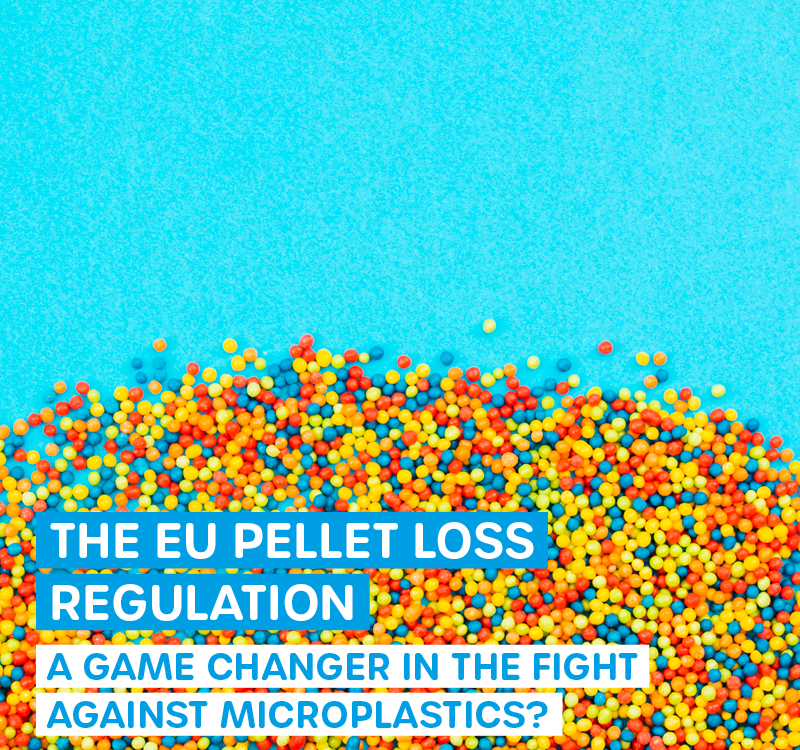
Microplastics in Beer
20. September 2025
Gully Filters Against Microplastics
27. September 2025CSRD and ESG Reporting: More Than Just Numbers on White Paper
From Reporting Obligations to Measurable Environmental Impact – Why Clean Water is the Litmus Test for Genuine Sustainability
The Corporate Sustainability Reporting Directive (CSRD) is revolutionizing ESG reporting in Europe. But while companies struggle with complex data collection and audit requirements, one central question remains unanswered: Do these reports lead to genuine environmental protection or just elaborate bookkeeping? We conduct a critical analysis using the example of water pollution through microplastics.
The State of the CSRD Revolution: Between Aspiration and Reality
From January 2025, the first large European companies must report according to the new Corporate Sustainability Reporting Directive. The CSRD replaces the inadequate Non-Financial Reporting Directive (NFRD) and extends reporting obligations to almost 50,000 EU companies. What initially sounds like a milestone for transparency reveals itself as a complex challenge with uncertain environmental impacts.
The staged implementation phases of the CSRD:
- 2025: Large-listed companies (>500 employees) report on 2024
- 2026: All large companies (>250 employees or >€40M revenue)
- 2027: Listed SMEs (with opt-out option until 2028)
- 2029: Non-EU corporations with significant EU presence
However, the first cracks in the system are already showing: In April 2025, the EU Commission voted for a two-year delay in CSRD compliance for all companies except the first wave. The "Stop-the-Clock" procedure and the Omnibus Simplification Package signal that the original requirements may have been too ambitious.
Political U-turns and their consequences
Recent political developments reveal a concerning tendency: The Omnibus package proposes applying the CSRD only to the largest companies (>1000 employees), thereby significantly reducing the scope of application. These setbacks occur under the guise of "competitiveness" but undermine the original goal of comprehensive sustainability transparency.
Central legal framework conditions:
- EU Taxonomy Regulation (2020/852) defines technical assessment criteria for sustainable economic activities, including "sustainable use and protection of water and marine resources"
- Water Framework Directive (WFD) is the main law for water protection in Europe since 2000, ensuring an integrated approach to water management
- Revised Urban Wastewater Directive came into force on January 1, 2025, and extends the scope to smaller settlements
Microplastics: The Invisible Test Case for ESG Credibility
While companies diligently calculate CO₂ equivalents and plant trees in distant countries, they systematically neglect one of the most urgent environmental emergencies of our time: microplastic pollution. Approximately 1.3 million tons of microplastics enter the oceans annually, with microparticles comprising about 90% of floating marine debris.
The dimensions are taking on increasingly alarming proportions. Here we mention just a few:
- Globally, microplastic values fluctuate dramatically between 0.001 to 140 particles per m³ in water and 0.2 to 8,766 particles per gram in sediments
- Microplastics have been found in every ecosystem on the planet, from Antarctica to tropical coral reefs, as well as in food, beverages, and human tissues
- Microplastics are considered ubiquitous pollutants and have been detected in indoor and outdoor air, drinking water, food, and in remote locations worldwide
- According to current research, environmental pollution could double by 2040, with far-reaching damage to ecosystems
Current studies show that each wastewater treatment plant transports between 93 million and 8.2 billion plastic particles per year into rivers and oceans. This polluted water contains 86 to 714 microplastic particles per cubic meter and fibers in the range of 98 to 1,479 per cubic meter.
The Pitfalls of Conventional ESG Measures and the "Tree Paradox": Greenwashing Instead of Real Impact
Tree planting for CO₂ compensation is often marketed as an ethical solution but in many cases is actually greenwashing. The problems lie on several levels:
Structural deficiencies in reforestation projects:
- Diverse forests are often cleared for agricultural production or industrial use and replaced by uniform stands of the same species
- Many reforestation projects suffer from inadequate monitoring, making it difficult to verify actual environmental benefits
- Tree planting initiatives have been associated with community displacement, introduction of non-native tree species, and tree cutting after just a few years
Greenwashing Trends in Reporting
Between September 2022 and September 2023, every fourth climate-related ESG risk incident was associated with greenwashing – an increase from 20% to 25% within just one year. Environmental regulation paradoxically leads to increased greenwashing in ESG reports as companies exaggerate their ESG investments.
We See Ourselves as True Pioneers for Measurable Environmental Impact
While most companies lose themselves in abstract sustainability metrics, we show a concrete path to measurable environmental impact. As an independent non-profit organization, Wasser 3.0 takes a systematic approach to combating microplastic and pollutant contamination of water bodies on a global scale.
The Wasser 3.0 PE-X® Technology: Clump & Skim Revolution
The process is based on creating a vortex in a water tank to which a compound called Wasser 3.0 PE-X® is added, which acts as a clumping agent and draws microplastics together into popcorn-shaped clumps that rise to the surface.
Technical specifications and effectiveness:
- Reproducible elimination rates of over 95% for microplastics and at least 80% removal efficiency for micropollutants
- The technology works independently of water temperature (7.5 to 40°C) and water type (wastewater, seawater, demineralized water)
- Treatment reduces microplastics by 98.26% (TSS) and 97.92% (particle count), preventing 1.1 kg MP/m³ water and an estimated 2.7 t MP/year
Circular Economy Instead of Disposal
The recovered agglomerates are suitable substitutes for insulation and building materials. Additionally, process chemicals and process waters are recovered at the desired pH and temperature.
Measurable Sustainability Metrics: From "Double Materiality" to "Single Reality"
A central concept introduced by the CSRD is "Double Materiality," meaning companies must disclose both the financial impacts of sustainability risks and their environmental and social impacts.
Practical implementation for water resources:
- Impact Materiality: Direct impacts on water quality through production processes
- Financial Materiality: Risks from water scarcity, regulation, and reputational damage
Concrete Measurement Methods for Water Impact
Our solutions are based on standardized detection, enabling the identification of microplastic pollution hotspots and the targeted and precise application of circular economy microplastic utilization. This results in real quantifiable metrics, which include:
- Microplastic elimination rate (particles/m³ before/after treatment)
- Prevented environmental burden (kg microplastics/year)
- Water recovery rate (% recycled process water)
- Material recovery (tons of recoverable agglomerates)
- CO₂ savings through circular economy
Regulatory Developments: Between Progress and Standstill
The JRC has published the world's first reference material that helps laboratories improve the analysis of microplastic particles in water. Unfortunately, the standardization protocols don't work as desired. Other reference material providers also see a lucrative business with counted particles, but no one can yet master the factor of foreign contamination and heterogeneous distribution.
The EU Commission has also adopted a new watch list for substances in surface waters, comprising twelve pollutants whose effects have been identified as possible far-reaching consequences for the environment and human health.
However, the implementation status is sobering: Two years after the publication of this Commission proposal to update the lists of priority EU pollutants, EU institutions continue to delay action. Member states initially wanted measures to only monitor pollutants.
Future Vision: The Water Paradigm as ESG Benchmark: From Compliance to Competence
The next generation of ESG reporting must transition from pure compliance fulfillment to genuine environmental competence. Water as an essential foundation of life offers the ideal measurement area for authentic sustainability performance.
Wasser 3.0 as a blueprint for corporate impact:
- Integrated production improvement: Companies can directly stop microplastic emissions at their production sites while simultaneously recycling process water
- Transparent success measurement: Real particle counting instead of abstract CO₂ equivalents
- Circular economic value creation: Transformation of pollutants into recoverable materials
- Scalable technology: Modular, low-maintenance, and cost-effective processes for various application areas
With Real Recommendations for Action: From Paper to Practice
For companies:
- Water footprint analysis: Implementation of continuous microplastic monitoring in all production processes
- Technology partnerships: Cooperation with innovators like Wasser 3.0 for genuine environmental solutions
- Circular integration: Transformation of waste streams into value-creation cycles
- Transparency-plus: Publication of detailed, verifiable environmental impact balances
For regulators:
- Acceleration of microplastic regulation: No further delays in implementing protective measures
- Promotion of innovative environmental technologies: Financial incentives for measurable environmental solutions
- Standardization of measurement technology: Harmonized methodology for measuring microplastics in drinking water
Conclusion: Water as the "Truth Serum" of Sustainability
The CSRD marks an important step, but its real test lies not in the completeness of reporting, but in the measurability of genuine environmental impact. As Wasser 3.0 demonstrates, technologies already exist today that achieve direct, quantifiable, and positive environmental impact.
The time of eloquent sustainability reports without substantial environmental improvement is coming to an end. Companies that want to survive in the post-CSRD era must transition from reporting about environmental protection to actual environmental protection. Clean water – free from microplastics and pollutants – could become the new gold standard: A measurement area that can neither be hidden nor covered up, but delivers clear, verifiable results.
The message is clear: More than just numbers on white paper are required. The future belongs to those who develop and implement measurable solutions for the most pressing environmental problems of our time. We show them the way – who follows?






